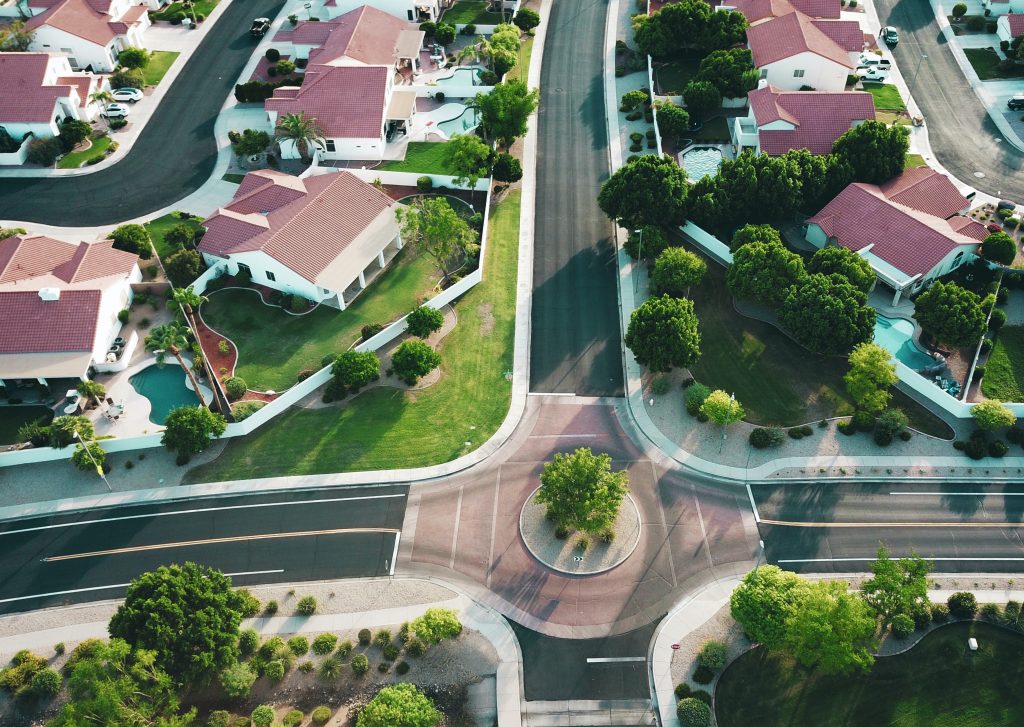New York City is a well-known trendsetter. The residential real estate trend in NYC is distinctively downward with rents declining and vacancies soaring. According to a July 2020 report by Miller Samuel Real Estate Appraisers & Consultants, there was a 122% increase in vacancies. This is the third straight month to see a new record vacancy in fourteen years of reporting.

The NYC outbound trend is to suburbs in places like Connecticut, Florida, North Carolina, Texas, and California. The trend is being heavily driven by COVID-19 and is be expected to be replicated in major cities across the country. For some, it’s a desire to get away from the crowds that spread the virus. For others, it’s a new freedom created by the widespread ability to work from home. But let’s not overlook the many other benefits that come with suburban living.
Americans are trading in their small city apartments for spacious suburban houses. More space means more privacy from the pandemic with people continuing to stay home more and avoiding crowds. Suburban homes have more space both indoors and outdoors. Kids can have their own rooms and a yard for more effective social distancing. You may even notice that there are actually stars out at night that you can’t see through the pollution and lights in the city.
If your objective is more space but you’re still on a budget, you’ll find plenty of living options in the suburbs. In fact, sometimes a mortgage payment for a house in suburbia can be less than the apartment rent in the city. However, owning a suburban home isn’t always less expensive but it does come with a lot more bang for your buck in terms of square footage and features. More space also gives you more choice between peace and quiet or hustle and bustle. Large suburban communities have a vibrant social scene with all of the amenities but in suburbia, the hustle and bustle happens in a community retail core instead of right outside your window.
More top-rated public and private schools are found in the suburbs. Instead of high crime rates and crowded classrooms, suburban classrooms are larger, on acres of land, and have more teachers. Suburban schools are also more family-friendly with kids making play dates and having more outdoor after school activities where parents also meet each other.
Urban suburbs lie between a city and its more traditional suburban communities. For many people, this is the perfect place to take advantage of the amenities of both. Within the suburban community is walkable access to libraries, parks, schools, and other places that are part of people’s normal routines. Urban suburbs also keep you close to the city’s boutique shops and cultural venues while also offering less expensive shopping options like suburban big box stores. But if you aren’t working from home, it means less public transportation and a longer commute to your job, especially if there is heavy traffic heading downtown.
Urban suburbs have their own local government answering only to the neighborhood they represent. Single neighborhoods typically mean less bureaucracy to deal with. Smaller communities can also mean that your volunteer work and activism make a proportionately bigger difference in the lives of your family and neighbors.
While the richest neighborhoods in the country continue to be a few elite suburban communities, the overall demographics in suburbia have been changing for decades. Demographer William Frey of the Brookings Institution has documented the dramatic growth of “melting pot suburbs,” where minorities now make up 35 percent or more of the population. With the recent movement towards the suburbs, the financial demographics have shifted from being predominantly higher income to a population that is decidedly more diverse. Many people in the millennial generation are also taking up residency in suburbs surrounding major cities, changing the average age of the population.
There are many pros and cons when deciding between living in a city core and choosing a suburban neighborhood. But most people still place their wallet at the top of the priority list. Your dollar stretches further in the suburbs, which can be important if you are on a tight budget. For less money, you can own more land and a larger home to call your own. If you have a growing family, you will definitely appreciate more space for your children and pets to run around.
What do you want to add about deciding between city and suburban life? Please leave a comment.
Photo by Avi Waxman on Unsplash
Also, our weekly Ask Brian column welcomes questions from readers of all experience levels with residential real estate. Please email your questions, inquiries, or article ideas to [email protected].